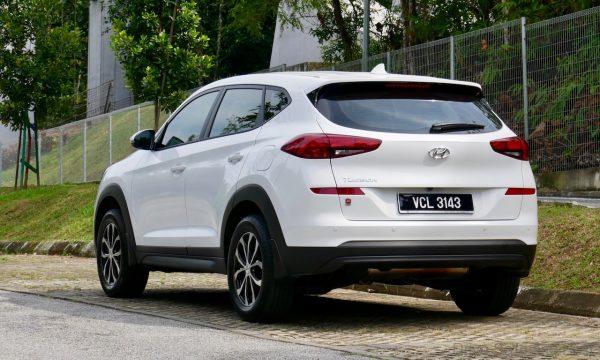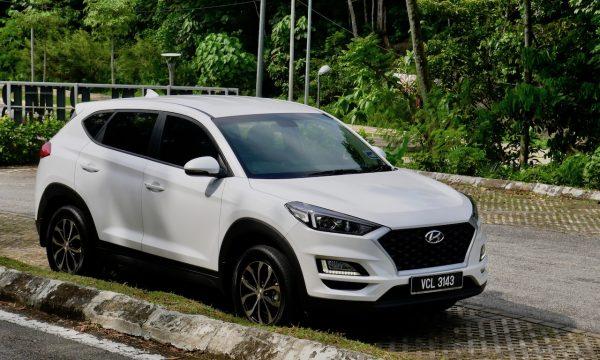Before we take a look at what this updated model brings, we need to establish just how much was done in the previous model. Hyundai brought in the Tucson in 2016 with a naturally-aspirated 2-litre engine that powered the front wheels through a 6-speed conventional automatic transmission. There were a few minor variants, but mechanically this was the only option in Malaysia at launch.

They later complemented this version with an all-wheel drive variant, then brought in a turbocharged diesel and 1.6-litre turbocharged petrol (with a dual clutch transmission) with some minor updates to keep the SUV relevant through to Q3 2018.

This facelift model came in in October 2018. The lineup was shaved down to just the 2-litre naturally aspirated petrol and the 1.6-litre turbocharged petrol models. The 2-litre turbo diesel and the all-wheel-drive variant of the 2-litre petrol have been dropped altogether.

While I have no data to support my opinion, I have to say this seems like a sensible decision. The mid-sized SUV market may be hot, but it’s also hotly contested. I trust they’ve taken what they’ve learnt from having those four variants and applied it in coming to this decision.

As before, the fundamental package of the Tucson is great. It’s extremely comfortable and dynamism is hard to fault for a C-segment SUV. The variant we tested was the entry level 2-litre and we found the power unit to be satisfactorily refined and to have adequate power to move a family of 5 people.

In fact, we were quite pleased with the delivery of the powertrain overall. Shifting too was quick and smooth, showing none of the poor characteristics some dual clutch and CVTs can display. It’s the kind of performance package that ticks all boxes without using engineering tricks to draw attention to it and that’s something we genuinely like about the Tucson 2.0.

Will you be left wanting with 155PS and 192Nm of torque? I sincerely doubt so. The powertrain shows a willingness to deliver when asked. And the chassis shows its strength at tackling both rough roads and sharp bends when asked.

And since performance is not what’s been changed with this model, we may as well move on to looks.

The biggest and most glaring change to the Tucson is at the front end. Here, a smarter and more elegant looking cascading grille has found its way to the face of the Tucson. In this 2-litre Tucson, the headlights are halogen projectors but the redesigned housing makes the whole thing look a lot more modern and sophisticated than one would expect. Overall, we quite like this new look on the Tucson. It does away with the conservative lines that plagued the previous generation of Hyundai and makes a bolder statement.

There are changes to the rear end as well. The reflectors and positioned a little higher and the taillight housings sport a different sort of graphic. Real improvements come when you venture further south.

The faux split tailgate look is no longer present and neither is the satin-silver bumper garnish (this applies to the rest of the car’s underbody too). The Tucson now looks a LOT cleaner and closer to beautiful stock versions we first saw in the Philippines.

There’s more good news once you step inside. Firstly, the top half of the dashboard has been redesigned. The new design embraces more curves and flows a lot better than before. More importantly, the infotainment unit and its controls are now free-standing. It’s also a new unit that seems to run a more propreitary Hyundai skin which we really appreciate.

Elsewhere, we’re extremely happy to note that the stitching and leather upholstery is now done extremely well. It’s all grey-on-black, no-nonsense, no-frills work and again we like this choice over what was offered previously. It even goes well with the carbon weave trim pattern on the dashboard.

Overall, I think this is the Tucson that I was hoping would launch in Malaysia some years back. I honestly think it’s worth check out if you want a capable family SUV that doesn’t break the bank.

The sub-RM125,000 2-litre model is pretty good value for a non-national SUV, and the only potential gripe you might have is that it features just 2 airbags. That aside, this is what I would consider the benchmark for mainstream SUVs in the segment. Other companies may offer a little extra here and there, but the Tucson now sets a good baseline for looks, performance, and build quality.

Hyundai Tucson 2.0 Elegance Specifications
Engine: Inline 4, DOHC Petrol
Capacity: 1999cc
Gearbox: 6-speed Conventional Automatic
Max power: 153hp @ 6200rpm
Max torque: 192Nm @ 4000rpm
Price: RM123,888



